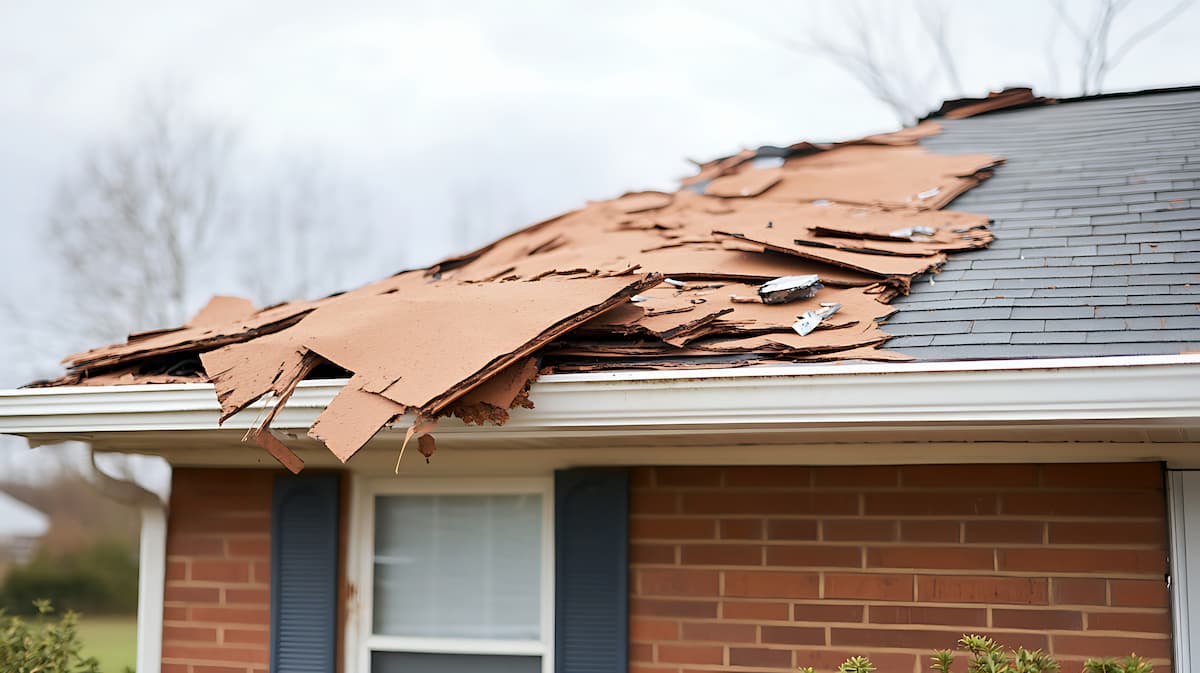- Know when your hobby turns into a business
- How does farm and ranch insurance work?
- Types of farm insurance
- Farm insurance property coverage
- Farm insurance liability coverage
- Business vehicle insurance
- Agriculture and crop insurance
- What's not covered by farm and ranch insurance?
- How much does farm and ranch insurance cost?
- How do you file a farm and ranch insurance claim?
Know when your hobby turns into a business
If you've recently become a farmer or rancher, you may assume that your insurance isn't going to change much. Your homeowner policy served you well enough in the past, and all that's changed is you've gotten a home with more land. But life's not like that.
The moment the income you derive from your home's land and other resources exceeds the "incidental income" threshold laid down in your homeowners policy, the game changes. In the eyes of your insurer, you're now a business, and there's a high chance things you thought were covered no longer are.
For example, that expensive stable block that used to be insured under your home policy when you kept only your own horses in it is unlikely to be covered once that threshold is breached. And other outbuildings and equipment may also be unprotected. Worse, you may have acquired new and different levels of liability by becoming an enterprise, and those may now be uninsured.
How does farm and ranch insurance work?
Every farm and ranch is unique, and each comes with its own particular challenges and risks. That's why agriculture insurance policies usually allow high levels of customization. Loretta L. Worters, who is Vice President of Communications at the Insurance Information Institute (III) explains:
Farm policies tend to be highly customized: there's barebones farm insurance policy, and then you add options based on the property you have on the farm and the liability protection you need. Because of the individual nature of each farm or ranch, the type of ranch, animals or not, makes the determination of the policy.
So you have to assess the risks you face, and decide on the ones you can afford to insure -- or can't afford not to insure -- and the ones you're comfortable shouldering yourself.
That's a difficult process, even for the most experienced and savvy agriculturalist, which is why many farmers and ranchers work closely with specialist insurance professionals, who can provide help and advice at each step.
Rocky Mountain Insurance Information Association (RMIIA) executive director Carole Walker says, "Farm/ranch insurance is complicated, and a very thorough evaluation of all risks and exposures is necessary to determine proper coverage. Work with an agent and company that fully understand this specialist area of insurance. It takes some time, but it's well worth the effort."
Types of farm insurance
This sort of insurance is often required by three types of policyholder:
1. Farm/ranch homeowner
You own your farm and live on it. Your coverage needs might include:
- Your home (dwelling house) and its contents, with similar protections to a standard homeowners policy
- Farm buildings and structures
- Farm "personal" property, possibly including farm machinery, grain, livestock and farm tools
- Personal and farm liability, providing protection if you're legally liable for damages caused to a third party's person or property
- Medical payouts to others -- help when you're liable to pay the medical bills of someone injured on your property
As explained before, you may choose blanket coverage for each of these or opt to specify ("schedule," in insurance jargon) individual risks and the maximum payout for each.
2. Non-resident farmer or rancher
You own or rent a farm but don't live there. This can provide similar coverage to that offered to owner/occupiers (above), but without protection for the home and its contents.
3. Resident renter
You rent your farm and live on it. Again, this can provide all the protections of a resident owner's policy, except the dwelling house structure. The home's contents may still be covered.
Your lease should specify which risks are covered by your landlord and which are your responsibility. As Carole Walker notes, "Renters face the same considerations as owners. The only difference is the responsibility that comes with ownership versus the contractual obligations contained in a lease."
And Loretta Worters explains, "You are insuring your personal property, but not the structure of the home. The landlord would insure the structure. If you are renting the equipment, the owner of the equipment would have some kind of coverage on it."
Farm insurance property coverage
Loretta Worters goes on to expand on some of the common risks farm and ranch insurance can cover:
Some of the coverages are similar to what any business needs to protect itself. But other coverages that are different that a farmer should be concerned about is farm equipment insurance, which provides coverage for farm equipment like tractors, threshers and combines. So if there is a fire or other natural disaster, you will be able to replace them. There's also farm structure insurance which protests various structures on your property such as barns, silos, pens, dairy parlors, even corral fencing. There's also crop insurance, which reimburses you if you lose a large portion of your crops to winds, drought, hail or extreme temperatures. And also livestock insurance in case your cows, sheep, goats or pigs are killed by severe weather, an accidental shooting, electrocution (a big issue) or if they are killed in transit.
Livestock insurance
For many in farming and ranching, their livestock are their single most valuable asset. Whole flocks and herds can be protected against disasters, and it's up to the individual farmer or rancher to assess the risks and costs of livestock insurance and decide on the coverage, if any, that's appropriate.
In a very few cases -- a prize bull, say, or a famous racehorse retired to stud -- an individual animal may be worth millions. But some farmers choose animal mortality coverage for key stock that are somewhat less valuable, but whose loss would result in financial hardship. Animal mortality coverage should pay out in the event of theft, or of death due to a many perils, including sickness and disease.
Such perils are not, of course, covered by standard livestock insurance policies, which are designed to protect against exceptional risks.
Tractor insurance
The scene where a tractor is lifted high into the swirling funnel of a tornado has become a movie cliche. And, no doubt, such events are in reality statistically insignificant. However, a replacement tractor can easily cost more than $200,000, and many are totaled or seriously damaged in less visually arresting ways each year.
Add on the value of expensive equipment and machinery (sprayers, drills, plows, planters and so on) that may be attached to them at the time of an incident, and losses can be eye-watering.
As with most farming risks, those covered by tractor insurance can be listed individually on the schedule, along with the item's actual value, or may be included within blanket coverage, which may have general (and perhaps insufficiently high) caps on possible pay outs.
Scheduling tends to push up premiums (costs) in line with the added protections it delivers.
Farm insurance liability coverage
Agriculture is a dangerous business. The Bureau of Labor Statistics reckons that, in 2014, farmers, ranchers and other agricultural managers comprised those working the sixth most dangerous job in the U.S., measured by fatal injuries per 100,000 people.
Loretta Worters provides a couple of examples of the liability coverage farmers and ranchers generally need:
- General liability insurance, which will protect you if someone who is visiting your farm is injured on your land or in your home.
- Product liability insurance, which protects you if the food or products sold by your farm cause illness or injury.
Anyone who opens up a farm or ranch to the public regularly or occasionally is likely to have special liability issues. Agri-tourism, U-pick, riding lessons ... the launch of all these and other similar ventures should be preceded by a long and detailed conversation with your insurer.
Of course, if you employ others to work on your property, you open up whole new areas of liability. Not only could you be responsible for death or injury during the course of their work, you might also be liable for their actions if those cause damage to others.
The University of Missouri gives an example: Suppose one of your employees throws a stone at one of your neighbor's cows that's strayed onto your land, and the animal dies. The intention was only to gently encourage the beast back onto its owner's property, and the outcome was accidental. However, there's a good chance you or your insurers are going to have to compensate your neighbor.
Generally, the actions of your direct employees (ones you're entitled to boss around) come with the highest levels of liability, but in some circumstances you may also be responsible for those of your agents and contractors.
When considering the liability coverage you need, think about a whole range of issues. Here are a few:
- Your state's statutory provisions for workers' compensation for farm/ranch employees.
- The number of direct employees you have, including seasonal ones.
- The levels of their training, skills and experience.
- How closely you or senior staff supervise them.
- Whether they're going to be operating machinery, and how dangerous that might be.
- Whether that machinery (including tractors) conforms to current safety codes.
- Whether your employees are going to be using chemicals, and how dangerous those might be.
- The sorts and numbers of animals they're going to work with, and the dangers those pose.
- Any special hazards on your land, such as cliffs, lakes or silos/grain bins without permanent internal ladders.
- Whether employees live on your land, and any additional risks that poses.
- How carefully you select agents and independent contractors, along with the quality of information and guidance you give them.
- The insurance your agents and contractors carry themselves, but don't assume their coverage automatically removes your liability.
Business vehicle insurance
There may be benefits in bundling your vehicle coverage with your farm and ranch insurance. "Bundling" (having more than one policy with the same insurer) often results in a significant discount on both or all the bundled policies' premiums.
Don't assume your personal auto policy is going to protect vehicles that are used mostly on farm business. True, most policies allow you to use your own car or truck for business purposes, but there's almost certain to be a ceiling on how much of its use can be commercial.
The III's website says, "A personal auto policy is unlikely to provide coverage ... if the vehicle in question is used primarily in business." And of course, a vehicle that is actually owned by a business needs business vehicle insurance.
Agriculture and crop insurance
Like most other forms of farm and ranch insurance, crop coverage is a risk management tool. In other words, you have to weigh the costs against your risks, and decide what, if any, insurance you need. For many, it's a necessity rather than a luxury.
It can protect you from losses resulting from many perils your growing crops may face, including:
- Windstorm and hail
- Other adverse weather conditions
- Insect infestation
- Wildlife damage
You can choose to buy your coverage from private insurance companies or from the federal government's Federal Crop Insurance Corporation (FCIC) via the Risk Management Agency (RMA), which is administered by the United States Department of Agriculture. The RMA has a helpful list of frequently asked questions on its website.
Some crops are only covered by the RMA in certain specified counties. So if you want to innovate by planting something different from your neighbors, you may need to talk to private insurers.
What's not covered by farm and ranch insurance?
Many risks are excluded from standard farm and ranch insurance policies. But one of the best things about these is your ability to customize them to meet your needs.
So, for example, you're unlikely to find fencing covered as standard. And most farmers and ranchers probably don't want it, because it's rare for damage to fencing to be either extensive or expensive to fix. But if you live somewhere that often sees widespread damage -- a place that is subject to regular tornadoes, for example -- you can schedule the risk on your policy.
It's to be sure you recognize the particular risks you face that Carole Walker of the RMIIA suggests you should "Work with an agent and a company that fully understand farm/ranch insurance. It's complicated and important that it be done properly to protect you."
How much does farm and ranch insurance cost?
You didn't seriously expect an answer to that! It depends on so many factors that it's impossible to come up with a meaningful response.
Clearly, the size and scale of the operation is key. But the risks each operation faces vary so enormously as to make averaging costs impossible. The first time you're likely to get a reasonably accurate idea of your premiums is when you have spent some hours identifying good insurers, getting quotes and working through the details with agents.
How do you file a farm and ranch insurance claim?
The actual process of filing a claim is straightforward, and similar to filing claims for other sorts of insurance: You call or fax your insurer's contact center. Nowadays, most companies also offer a facility on their websites to initiate the process.
As a minimum, you should be ready to provide the following information:
- Policy number
- Insured's name
- Date, time and exact location of of the incident that caused the loss
- Names and phone numbers of persons involved and witnesses
- Full description of the incident and your likely liability or loss, including any injuries
You should protect your interests right from the get-go. Open a file, and keep good records relating to your claim, starting with the date and time you filed, the name of the person you spoke to and notes of what was said. If you faxed your claim, keep a copy of the document and the transmission report. If you used the insurer's website, print the pages -- if necessary as screen grabs -- and if the date and time don't appear on those, write them on the document.
Make detailed notes for your file about the incident so that you can later recall details accurately, and take and keep lots of photos relating to the incident and the loss.
Try to think of other sources that might support your claim and add documents from those to your file. For example, if your loss is weather-related, you could print out relevant data from the National Weather Service website along with reports of the impact of the event from your local newspapers.
You want your version of events to be unassailable. Although most insurers willingly pay out for legitimate claims, you may find your narrative challenged, and all the above helps you resist any attempt to paint a different picture.




